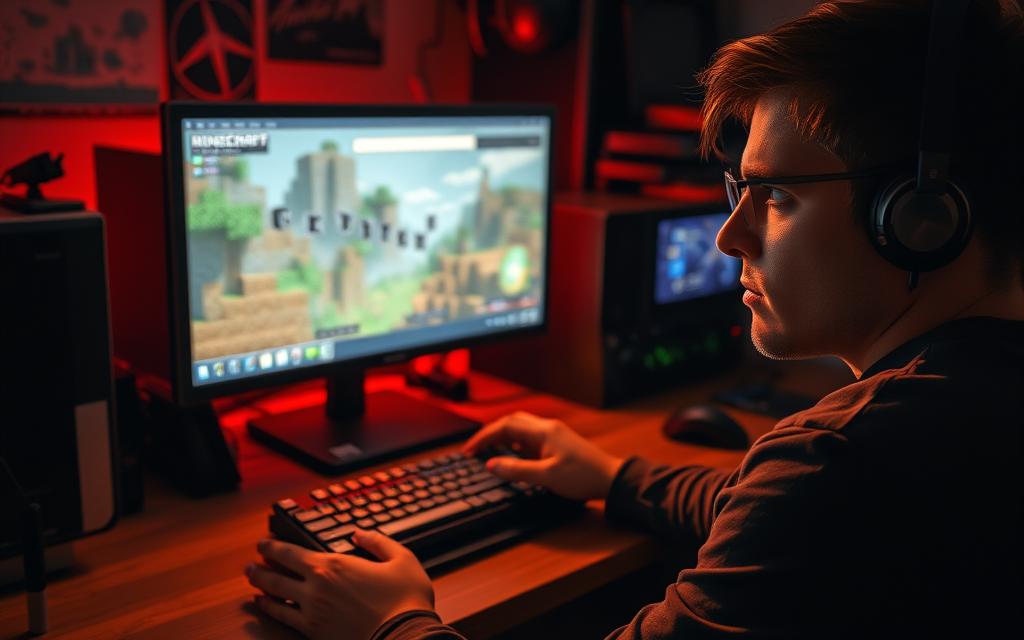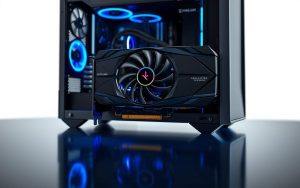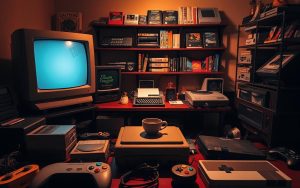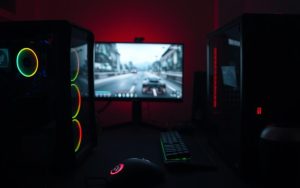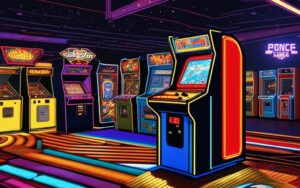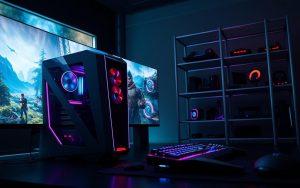Table of Contents
Many players have experienced performance issues with older GPUs like the GTX 780. Despite its historical capabilities, this hardware can struggle with modern games. Reports from forums like Steam and Quora highlight similar challenges on newer cards, such as the RTX 2070 and GTX 1050 Ti.
This article aims to diagnose the root causes and provide actionable fixes. Community discussions on platforms like Steam Forums have been invaluable for troubleshooting. We’ll explore hardware analysis, settings adjustments, and optimization strategies to enhance your experience.
By understanding these factors, you can make informed decisions to improve performance. Let’s dive into the solutions and get your system running smoothly again.
Why Does Minecraft Lag on My Gaming PC GTX 780?
The GTX 780, once a powerhouse, now faces hurdles with modern game demands. Released in 2013, its architecture struggles with newer graphical features. Updates like ray tracing and advanced shaders push this hardware beyond its limits.
Hardware Limitations and Modern Demands
While the GTX 780 delivered solid performance in its prime, today’s games require more. High render distances and anti-aliasing settings drain its resources. A Steam user with an RTX 2070 reported FPS drops from 170 to 30 when enabling these features.
Texture filtering and mipmaps also strain older GPUs. Community discussions on GameFAQs highlight similar struggles. Players note significant lag when combining high-resolution textures with shaders.
Common Performance Bottlenecks
Several factors contribute to subpar gameplay:
- Java Edition optimization: Bedrock runs smoother, but Java’s flexibility comes at a cost.
- RAM allocation: Mixed setups often misallocate memory, as noted by a Quora user with 16GB DDR4.
- Render distance: Beyond 16 chunks, chunk loading slows drastically.
| Setting | Impact on GTX 780 |
|---|---|
| Shaders | FPS drops by 50-70% |
| 12+ Render Distance | Increased stuttering |
| Anti-Aliasing | 20-30% performance hit |
The community frequently addresses these issues in forums. A recurring topic involves balancing visual quality with playability. Many comment that tweaking settings is essential for older cards.
Troubleshooting Minecraft Lag on GTX 780
Players using the GTX 780 frequently encounter performance bottlenecks. These issues often stem from outdated settings or software. Addressing them can significantly improve gameplay.

Checking Graphics Settings
Adjusting graphics settings is a quick way to boost performance. Lowering anti-aliasing and mipmap levels can prioritize FPS over visuals. Tools like MSI Afterburner or the NVIDIA Control Panel help fine-tune these settings.
Many users comment on the effectiveness of reducing render distance. Keeping it below 12 chunks minimizes stuttering. This topic is frequently discussed in forums, offering practical tips for older GPUs.
Updating Drivers and Software
Outdated drivers are a common cause of lag. Updating Java and NVIDIA drivers ensures compatibility with modern games. NVIDIA offers both Studio and Game Ready drivers, with the latter optimized for gaming.
Enabling VSync or capping FPS can stabilize performance. A Quora user with a Ryzen 3 2200g/GTX 1050 Ti setup reported significant improvements after updating drivers. Consulting official support staff can also resolve launcher-related bugs.
| Action | Impact |
|---|---|
| Lower Anti-Aliasing | Reduces texture jaggedness |
| Update Drivers | Improves compatibility |
| Cap FPS | Stabilizes performance |
For more insights, check out Minecraft’s performance and how it balances CPU and GPU usage. Community forums are also a valuable resource for GPU-specific fixes.
Optimizing Minecraft for GTX 780
Optimizing gameplay on older hardware like the GTX 780 requires strategic adjustments. By tweaking settings and leveraging performance mods, you can significantly enhance your experience. This section explores practical steps to achieve smoother gameplay.
Adjusting In-Game Settings
Fine-tuning in-game settings is a straightforward way to boost performance. Start by reducing the render distance to 8-12 chunks. This minimizes chunk loading strain, which is a common issue for older GPUs.
Switching to Fast graphics and turning off particles can also help. These changes prioritize FPS over visual effects, ensuring smoother gameplay. Many users in the community have commented on the effectiveness of these adjustments.
Allocating more RAM via the launcher is another key step. A minimum of 4GB is recommended to handle the game’s demands efficiently. This ensures that resources are properly distributed, reducing lag.
Using Performance Mods
Performance mods like OptiFine, Sodium, and Lithium are game-changers. OptiFine resolves texture issues and offers customizable anti-aliasing without FPS loss. It’s a favorite among the community for its versatility.
Sodium and Lithium improve chunk loading and overall performance. A Quora user reported significant improvements after installing these mods. Always ensure you’re using staff-vetted solutions to avoid outdated or incompatible mods.
For detailed guides, consult forums like Reddit or Planet Minecraft. These platforms provide valuable insights and step-by-step instructions for optimizing your setup.
Conclusion
With the right adjustments, older hardware can still deliver a smooth gaming experience. By fine-tuning settings and leveraging performance mods, you can achieve a balance between visual quality and playability. The community offers valuable insights, making forums like Steam and Quora excellent resources for troubleshooting.
Feel free to comment and share your fixes on these platforms. Engaging with others can lead to new solutions and updates. For safe mod downloads, always use staff-curated repositories to avoid compatibility issues.
Remember, targeted optimizations can resolve performance challenges without the need for hardware upgrades. With patience and the right approach, you can enjoy a seamless experience on older systems.
FAQ
What causes Minecraft to lag on a GTX 780?
Lag can occur due to outdated drivers, high in-game settings, or insufficient system resources. The GTX 780, while capable, may struggle with modern demands if not optimized.
How can I check if my GTX 780 is causing the lag?
Monitor GPU usage using tools like MSI Afterburner. If the GPU is maxed out, it’s likely contributing to the lag. Lowering settings or updating drivers can help.
Are there specific in-game settings I should adjust?
Yes, reducing render distance, turning off fancy graphics, and lowering particles can significantly improve performance on the GTX 780.
Should I update my drivers for better performance?
Absolutely. Ensure your NVIDIA drivers are up to date. Newer drivers often include optimizations for games like Minecraft.
Can mods help improve performance on the GTX 780?
Yes, performance-enhancing mods like OptiFine can optimize the game for better frame rates and smoother gameplay on older GPUs.
Is the GTX 780 still suitable for Minecraft in 2023?
While the GTX 780 is older, it can still run Minecraft effectively with proper settings and optimizations. However, newer GPUs will provide better performance.


